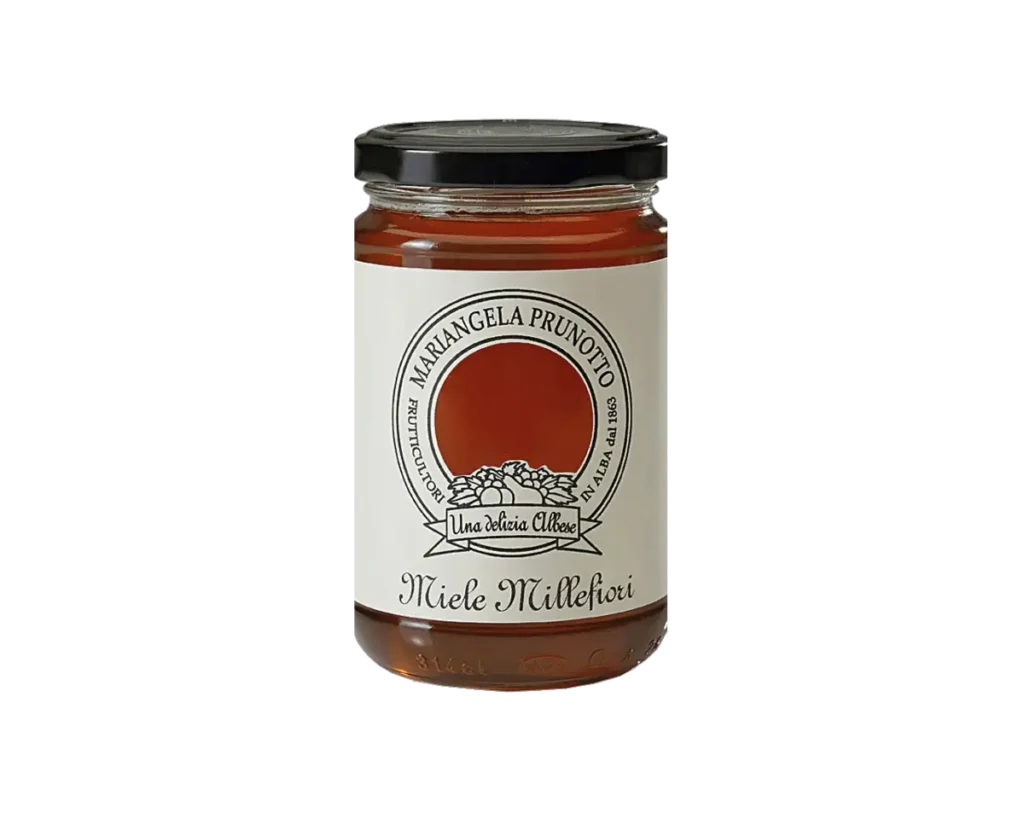

*Le immagini sono inserite a solo scopo illustrativo.
Il prodotto potrebbe differire per alcuni dettagli.
Miele Millefiori
Il nostro miele millefiori è raccolto tra giugno e luglio, si presenta liquido, con gradazioni di ambra e un aroma pieno e variegato. È il miele più versatile e dal gusto più semplice, adatto a tutti i palati. Perfetto per la preparazione di dessert e budini, si abbina con facilità a piatti di carne e pesce in salsa, ed è ottimo con la frutta fresca. Un classico intramontabile, ideale per ogni momento della giornata.
Aggiungi i prodotti al carrello e contattaci per i prezzi
Condividi
Alleviamo le nostre api con cura e rispetto, seguendo un metodo naturale e nomade che valorizza le diverse fioriture del Piemonte. Il nostro miele è puro, non pastorizzato e non filtrato, frutto di un equilibrio tra natura e tradizione.
Miele raccolto in Piemonte/Italia.
| Valori nutrizionali | |
| Valori medi per 100g di prodotto | |
| Valore energetico | Kcal 332 / kJ 1394 |
| Grassi | < 0,1 g |
| di cui grassi saturi | < 0,1 g |
| Carboidrati | 82 g |
| di cui zuccheri | 80 g |
| Proteine | 0,8 g |
| Sale | 0,1 g |
| Fibre | |
Il contenuto di sale è dovuto alla presenza di sodio
Conservare chiuso in luogo fresco ed asciutto.
| Formato | 100g, 400g |
|---|
Alleviamo le nostre api con cura e rispetto, seguendo un metodo naturale e nomade che valorizza le diverse fioriture del Piemonte. Il nostro miele è puro, non pastorizzato e non filtrato, frutto di un equilibrio tra natura e tradizione.
Miele raccolto in Piemonte/Italia.
| Valori nutrizionali | |
| Valori medi per 100g di prodotto | |
| Valore energetico | Kcal 332 / kJ 1394 |
| Grassi | < 0,1 g |
| di cui grassi saturi | < 0,1 g |
| Carboidrati | 82 g |
| di cui zuccheri | 80 g |
| Proteine | 0,8 g |
| Sale | 0,1 g |
| Fibre | |
Il contenuto di sale è dovuto alla presenza di sodio
Conservare chiuso in luogo fresco ed asciutto.
| Formato | 100g, 400g |
|---|
Spedizioni veloci in tutta Italia
Hai bisogno di aiuto?
Per informazioni oppure ordini telefonici puoi contattarci al numero +(39)0173441590 oppure all'email info@mprunotto.com
I prodotti più acquistati
Chi ha acquistato questo articolo ha acquistato anche
[NEWSLETTER]
Iscriviti alla Newsletter!
Cliccando sul pulsante "Invia" accetti i termini della Privacy Policy.
Per qualsiasi informazione, puoi contattarci ai recapiti di seguito. Saremo felici di rispondere alle tue richieste!
Azienda Agricola Prunotto Mariangela ssa
Via Osteria 14, 12051 Alba (CN) Italia
PARTITA IVA e C.F. 03091730048
Sezioni
Categorie
Scelti per voi
© powered by Digityze


